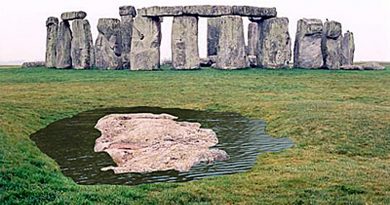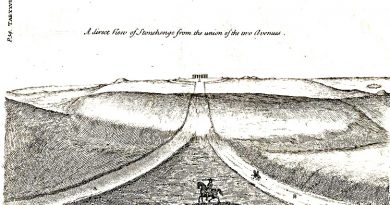The Rise of the Cro-Magnon (Homo Superior)
Contents
- 1 The rise of Homo Superior
- 2 Interbreeding
- 2.0.0.1 As neatly summed up by an ardent defender of Neanderthal cognitive capabilities (Hayden, 1993, p. 139)
- 2.0.0.2 “as a rule, there is no evidence of private ownership or food storage, no evidence for the use of economic resources for status or political competition, no elaborate burials, no ornaments or other status display items, no skin garments requiring intensive labour to produce, no tools requiring high-energy investments, no intensive regional exchange for rare items like sea shells or Amber, no competition for labour to produce economic surpluses and no corporate art or labour intensive rituals in deep cave recesses to impress onlookers and help attract labour.”
- 2.1 Further information on Homo Superior and his work can be found: https://youtu.be/B0lWziOvgTk
Cro-Magnon is the name of a rock shelter in the Dordogne region of France. Here three prehistoric skeletons were found in 1868; these humanoid remains are about 28,000 years old. These remains showed the same forehead, upright posture and slender skeletons as modern humans. Necklaces were found buried with their bodies, suggesting the first forms of humanoid burial rights. These bodies showed signs of illness and injury; some had fused vertebrae in their necks, and others had skull fractures and signs of healing, indicating that they had been cared for and lived beyond their injuries.
To place an exact date on when this interbreeding began or when the first Cro-Magnon were born is impossible to suggest, but another cave discovery of a Cro-Magnon skeleton near the Iron Gates in Romania may be a closer indication of the first interbreeding. It is situated in the Danubian corridor, which may be the entry point of the Cro-Magnons into Europe from their Asian base. ‘Pestera cu Oase’ (cave with bones) ‘Oase 1’ has a thick jawbone similar to a Neanderthal together with other minor Sapien features; he has been dated 35,000 years ago
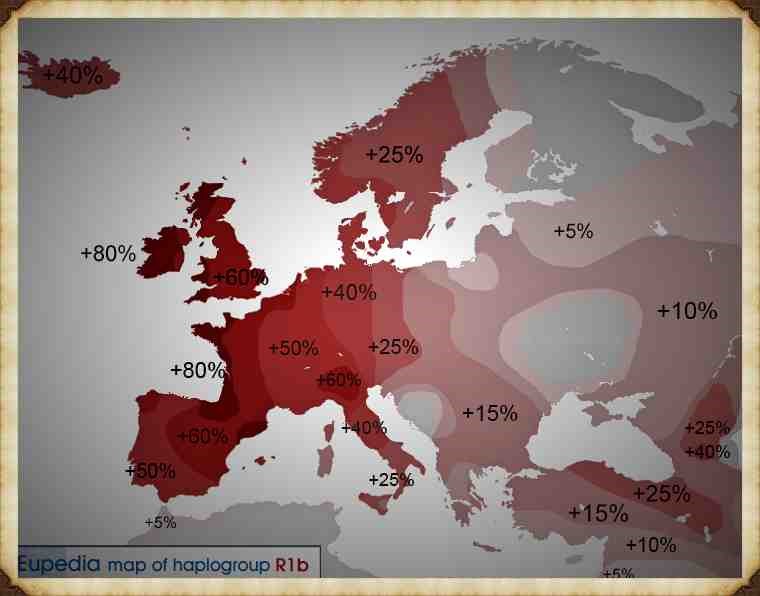
Why are Cro-Magnons not seen as a separate species anymore?
Before we try to answer this question, we attempt to understand why archaeologists in the first instance believed this discovery in the Dordogne area was a sub-species of humanity and hence the introduction of the anthropological name ‘Homo Cro-Magnon’ giving to the remains rather than Homo Sapien or ‘modern man’ as we would describe it today.
Cro-Magnon’s skulls are longheaded; the forehead is straight, the brow ridges only slightly projecting; the cranial vault is noticeably flattened and the occipital bone (at the back of the head) projects backwards. The cranial capacity (brain) is large, about 1600cc. Although the skull is relatively long and narrow, the face appears quite short and wide. The forward projection of the upper jaw is also distinctive; the eye sockets are low-set and somewhat square, and the nasal aperture of the skull is narrow and powerfully projecting.
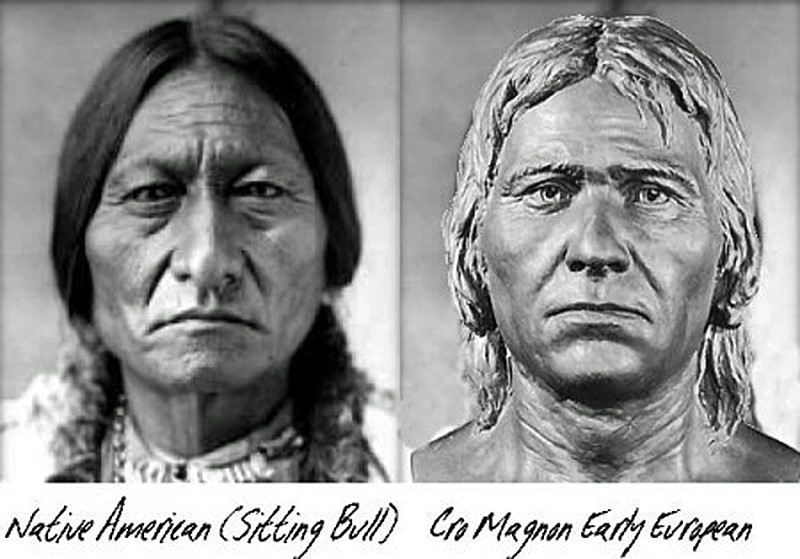
The mandible is robust, with massive ascending ramus (the upward projection of the jaw, where it attaches to the skull), has strongly developed points of muscular attachment and quite a prominent chin. The stature of Cro-Magnon is lofty, on average over six feet tall. Although in some places even taller and their longevity was exceptional for a prehistoric society as some skeletons are found to be over 50 years old, which may not sound very old today, but this should be viewed in the context to other prehistoric groups – such as Neolithic farmers whose average age was just 25 and even a Roman citizen who was lucky to survive until 35 – although some pampered Senators occasionally reach their 50’s.
Therefore, as you can see the Victorians with an average height of 5’ 2” and an average age of death at 34 (44 for the academic classes and 25 the working class) saw the Cro-Magnon as a sub-species as far apart from themselves as the Neanderthal – as they were taller, faster, stronger, more intelligent and lived longer than the average Victorian.
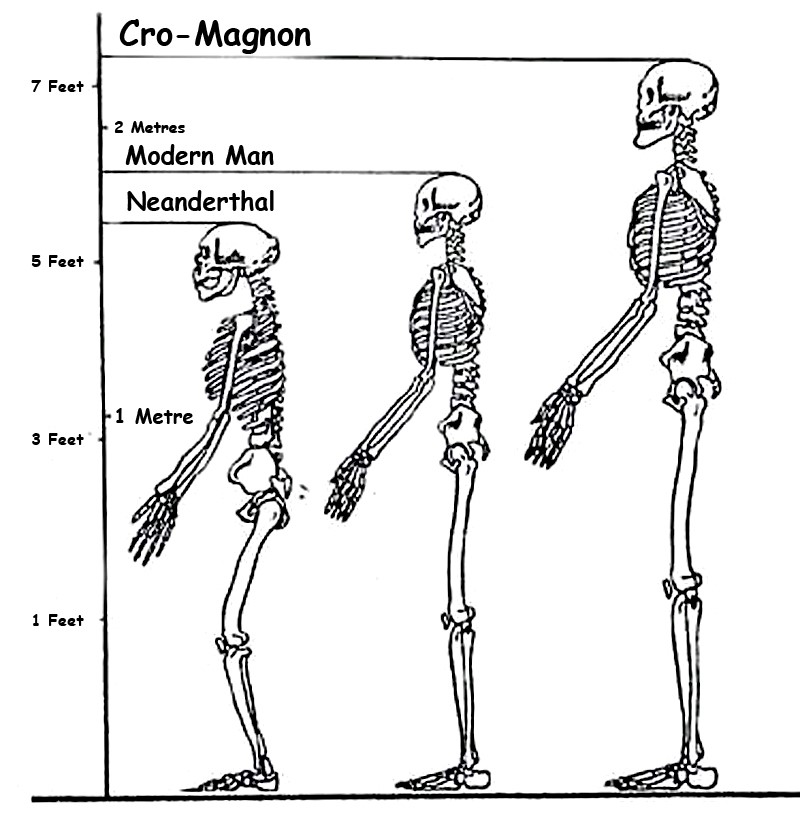
An interesting fact is that there are notable differences between eastern and western types of Cro-Magnons. As we have shown, humanoids genetically mutated to create M173 and M343 haplogroups, some moved east the others moved west. Archaeologists have given these individual groups to the east, titles to show this variation such as Brunn Man, Predmost or Combe Capelle; these groups are generally shorter, more gracile (thinner) and smaller brained than our western variations of Cro-Magnons, which in my mind shows them to be a separate mutated species – as a Corgi is clearly different in size, shape and attitude to an Irish wolfhound, yet they are both technically canines.
Moreover, M173, M207 and M343 come from the parent Haplogroup R1 – so we now know the genetic signature of the Cro-Magnons, which will allow us to trace them in future chapters, even with these slight genetic deviations.
However, current anthropologists now place them all under the same banner of ‘modern man’ (Homo Sapien Sapien), which can confuse the issue and lead to false generalisations that Cro-Magnon was not as tall or larger brained as first reported. This satisfies the need to be ‘politically correct’ with human evolution to not upset either the ‘creationists’ or racial lobbies, particularly in the Americas, where most genetic research funding is found.
As an example, the Combe Capelle Man is only 5’ 4” rather than the six-foot-three statue of the Cro-Magnon found in western Europe, and hence some reference books classify ‘incorrectly’ Cro-Magnons had an average height of as 5’ 6” – 5’ 7” – successfully reducing their uniqueness and so avoiding obvious awkward questions on the differences between Western, African and Far East cultures, statute and colouration.
The second example of the difference between east and west Cro-Magnons is the tool kit; the eastern tools are just a slight extension of the Neanderthal toolkit from the past 80,000 years, whereas the western toolkit shows signs of high craftsmanship. Nevertheless, the most evident sign of the difference between the east and west Cro-Magnons and all other members of the human tree is that Cro-Magnons brought art and music to our civilisation. The paintings found ‘throughout’ the Pyrenees and Cantabrian mountains in France, which have become famous throughout the world, show these artists’ high degree of skill and coordination, which is missing from all these eastern groups.

Anthropologists generally agree that the eastern Cro-Magnons were nomads whose numbers are fragile and scattered in occupational sites. While the western Cro-Magnon numbers are usually thick (meaning a long and settled occupation in a single place) and are clustered towards the rivers of the European continent, which could explain the sources of their food and the differences in their physical appearance consequently, their intelligence. These occupational sites also contain the first evidence of houses proving that this society was not the stereotypical ‘cave men’ or ‘hunter-gatherers’ archaeologists still use to describe prehistoric Europeans.
The rise of Homo Superior
I fundamentally believe that Cro-Magnons (Homo Superior) resulted from interbreeding between migrating Sapiens and Neanderthals, and this kind of cross-breeding took place on many occasions and locations before their travels into Europe from Asia. However, this was not the only ‘interbreeding’ that led to human mutations in our history, for weird variations of humanoids are being found in fossil records all over the world, some of which are quite peculiar and short-lived, such as the ‘hobbit’ in the far east (Homo Floresiensis). These are remains of an individual who would have stood about 3.5 feet (1.1 m) in height and were discovered in 2003 on the island of Flores in Indonesia.
These mutations could be from Erectus and Neanderthals or Erectus and Sapiens or even Erectus and Homo Superior. The combinations of these matting patterns are almost endless variations of the original Wolf, now run around our houses in various coats and sizes – which show no clear comparison to the original. So it is not surprising that humans also have such vast physical and aspheric differences.
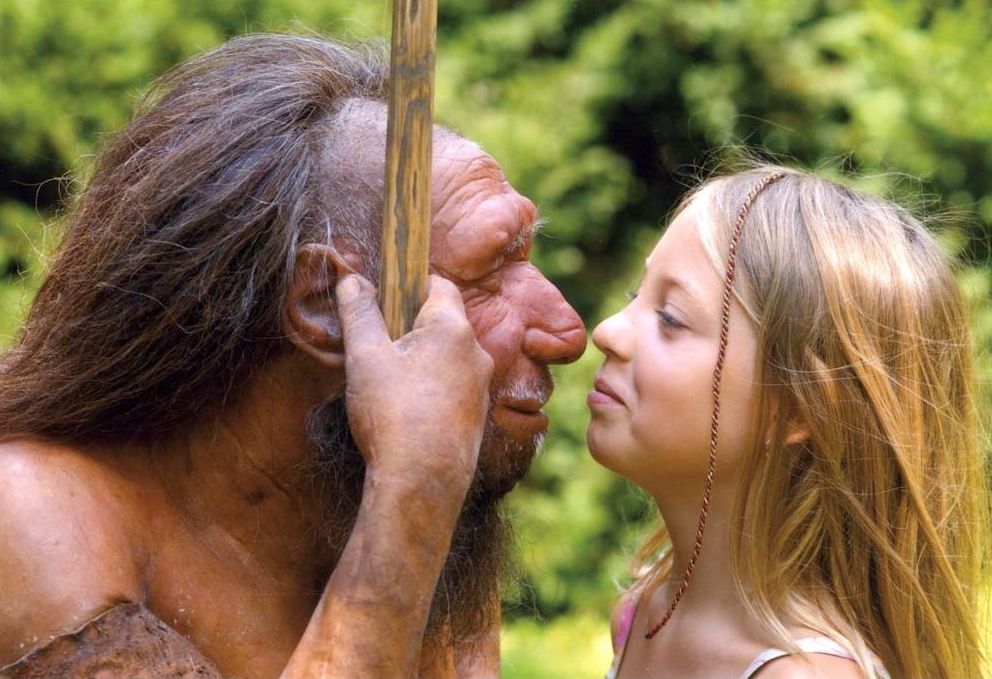
The development of Homo Superior and how its family structure was managed is significant if we are to understand the kind of interbreeding that was going on and why it was so successful, mainly as most other humanoid mutations failed to succeed the test of time and are just fossil records now, unlike Homo Superior. It is more likely that the Neanderthal females mated with Sapien males for their communities were ‘matriarchic’ (female based) in structure, which is reflected in their burial practices. The evidence shows that the Neanderthals buried their dead with possessions and flowers thousands of years before similar Sapiens burial customs were established.
It should be remembered that matriarchy is a social, organisational form in which the mother or oldest female heads the family. Descent and relationships are determined through the female line and governed or ruled by a woman or women.
Most anthropologists believe that there are no known societies that are unambiguously matriarchal today, but some authors believe exceptions are possible. Nevertheless, the loss of such communities gives us a valuable clue to what customs and practices are ‘prehistoric’ and even ‘Homo Superior’ by nature when we look at our ancient history.
It should also be recognised that notwithstanding in today’s societies, in the third world, infanticide would be commonplace as strong independent boys are desired as they can work more hours and support the family better than girls who can be classed as liabilities. African hunter-gather Sapien groups would need to travel long distances foraging for food, so men would be preferred within the social group which lived on a ‘survival of the fittest’ ideology.
Consequently, society would be male-dominated. These groups would leave the dying, weak and sick (including children and girls) behind on their treks across the open Savannah or over hills and mountains. However, because of this limitation, they could only be successful in mild and plentiful climates.
Interbreeding
On the other hand, a matriarchy society like the Neanderthals utilised had successfully survived outside of Africa for over 100,000 years within a fluctuating climate without extinction – but then disappeared almost overnight without reason or archaeological evidence. The causation of this extinction could be relatively simple – the female to male ratio being too great/small or quite possibly reintroducing a Sapien disease, which was deadly to the Neanderthals. This effect has been seen throughout time, for example, in the smallpox plagues that infested Central America after the arrival of the Spanish. To gain some scale level, the Aztec war killed little compared to the Smallpox that spread North and South. Smallpox killed a total of 90% of the population, who had no immunity. During the harsh winters of the last ice age, such a disease would undoubtedly end the Neanderthal species and is further evidence of interbreeding between Sapiens and Neanderthals.
So why was there interbreeding?
There are two main possibilities for interbreeding. Firstly, males of any species tend to mate at random to seek self-fulfilment, often without emotional or familial connection. In the case of a male Sapien mating with a female Neanderthal, the pairing would leave a
Neanderthal single mother, as the male would leave due to lack of emotional connection, and a Homo Superior child who shared the positive aspects of both species. This mating occurrence could be caused by the female’s desire to mate with the alternative species. Alternatively, if the Neanderthal species was disappearing due to the lack of males or a selective disease, Neanderthals may have had no other option but to pair with Sapiens purely for survival.
What are the positive attributes of this cross-breeding of the Species?

Neanderthals used simple stones for tools. They constructed and made essentially the same stone tools over and over again for perhaps 200,000 years, all serving a single purpose, until around 35,000 years ago, with slight variation or consideration of alternatives. This suggests that they greatly lacked creativity, initiative or imagination.
As neatly summed up by an ardent defender of Neanderthal cognitive capabilities (Hayden, 1993, p. 139)
“as a rule, there is no evidence of private ownership or food storage, no evidence for the use of economic resources for status or political competition, no elaborate burials, no ornaments or other status display items, no skin garments requiring intensive labour to produce, no tools requiring high-energy investments, no intensive regional exchange for rare items like sea shells or Amber, no competition for labour to produce economic surpluses and no corporate art or labour intensive rituals in deep cave recesses to impress onlookers and help attract labour.”
Neanderthals tended to live in the ‘here and now,’ with limited ability to think about or consider the distant future, with one notable exception – the forthcoming life after death. This noteworthy exception is a function of the differential evolution of the frontal versus the temporal lobes. The frontal lobes are the ‘organisational and management’ centres of the brain and are responsible for the initiative, goal formation, long-term planning, generating multiple alternatives, and considering multiple alternative consequences. The frontal lobes are the source of creativity and imagination, whereas the temporal lobes are the brain’s ‘speech and vision’ centre. The temporal lobes were majorly developed in Neanderthals, whereas the frontal lobe would increase in size by a third in the transition from Sapiens to Homo Superior.

Based on a gross analysis of the skull and casts made of the inner surface of the skull, it is apparent that Neanderthal men and women possessed a well-developed inferior temporal lobe, whereas the frontal lobe is sloped and stunted. The temporal lobes and the limbic structures buried within are directly implicated in the generation of personal, emotional, and religious experience, including the ability to form long term emotional attachments and feel intense love. This fierce love plays an essential role in the nurturing power of the less mobile Neanderthal groups and makes it less probable for them to abandon their ‘interbred’ babies in comparison to the more mobile ‘nomad’ Sapien groups.
Neanderthals provided loving care for friends and family who had been injured or maimed, enabling them to prolong their lives despite their grievous injuries. For example, the skeleton of one Neanderthal male, approximately aged 45 when he died, had been cared for over several years following profoundly crippling injuries. His right arm had wasted away through disease or injury, and his lower arm and hand had been ripped or bitten off. His left eye socket, right shoulder, collarbone, and both legs were also severely injured. Despite these injuries, findings suggested that someone loved and tenderly cared for this man. He was no doubt a father, a husband, a brother, and a son, and someone in his family not only provided long term loving care to make him comfortable in this life but prepared him for the next life as well.
Further information on Homo Superior and his work can be found: https://youtu.be/B0lWziOvgTk
Articles: https://prehistoric-britain.co.uk/
Facebook Group: https://www.facebook.com/groups/prehistoricbritain


